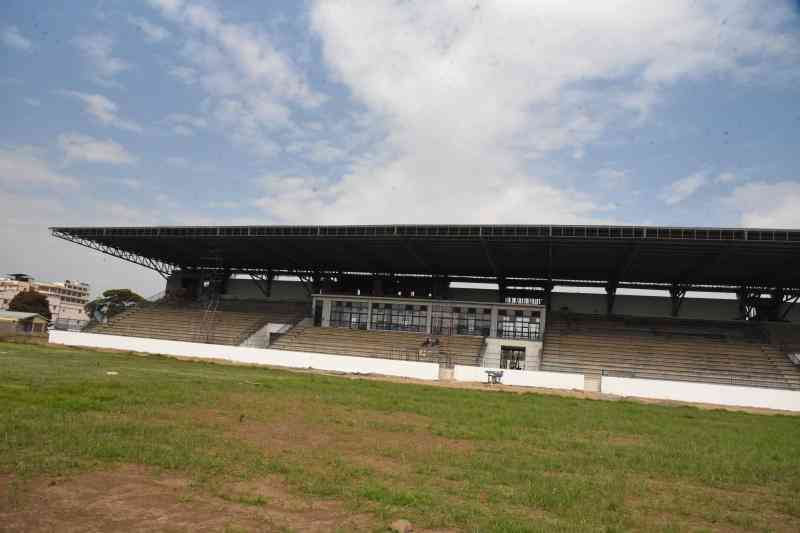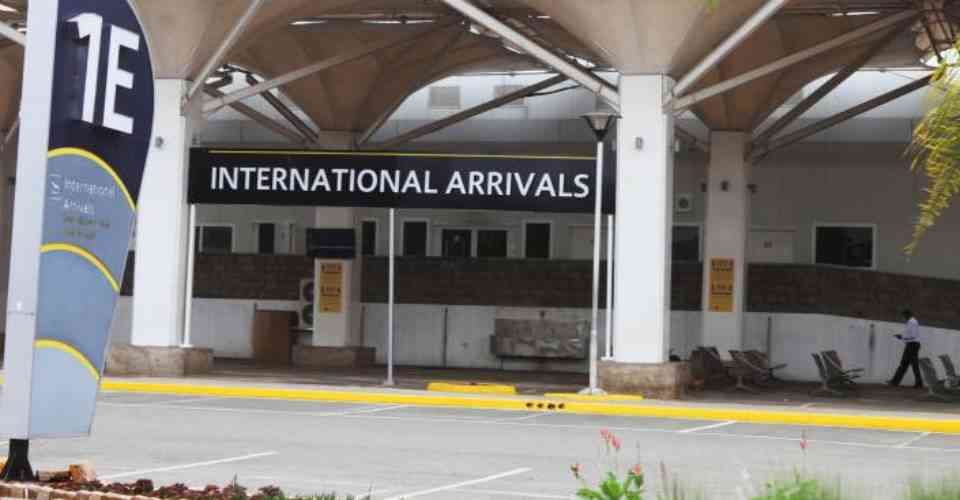
The mood inside the control tower at the Eldoret International Airport had drastically changed since the first time the tower had got in touch with a Nairobi bound flight from Kitale.
An hour had passed since the pilots made contact with the control tower.
By now, the flight, Flysax flight EXZ 102, ought to have been taxiing along the wet Runway 24 at the Jomo Kenyatta International Airport.
Fifty eight minutes after it took off from Kitale on June 5, 2018, the Cessna 208B Grand Caravan airplane, registration 5Y-CAC, flew straight into the Elephant Hill, a steep, mountainous section popping out of the Aberdare Ranges.
Now, a new report blames the accident on the pilots’ apparent inexperience, possible laxity by the Kenya Civil Aviation Authority (KCAA) and the possibility of ‘a lack of awareness’ of a KCAA team monitoring the radar at the control tower at the time of the accident.
All these, the report says, contributed to a deadly mix of events that led to the death of all 10 people on board.
“The Aircraft Accident Investigation Department determines the probable causes of this accident to be the flight crew’s inadequate flight planning and the decision to fly instrument flight rules (IFR) at an altitude below the published Minimum Sector Altitude in the Standard Instrument Arrival Chart as well as their failure to perform an immediate escape maneuver following an alert, which resulted in controlled flight into terrain,” the report states.
Investigators also faulted KCAA for failing to hold the operator of the airplane accountable for a series of “known operational deficiencies”.
The radar safety controller at JKIA was also found to have lacked “situational awareness while monitoring flights within the radar service section”.
When the two pilots, Captain Barbara Wangeci Kamau and First Officer Jean Mureithi, took off from the Kitale Airstrip at 1.05pm on that fateful Tuesday afternoon, they could not have imagined that this would be their last flight.
In fact, on that day, the all-female crew had had an early start to the day, and the Kitale-Nairobi route was the last after a busy day.
Earlier in the morning of the accident, the crew flew from Wilson Airport to Homa Bay and back to Wilson Airport, before taking off once again and making various intermediary landings at Ngerende, Angama, Olare, Olkiombo, Keekorok and back to Wilson Airport at 10.13am.
The cumulative elapsed time from the first flight up to and including the return flight from Keekorok to Wilson Aairport was four hours and 16 minutes.
Then they headed to Kitale where passengers were anxious over the possibility of their flight being cancelled altogether. The weather had been unpredictable. Several flights had been rescheduled while others were cancelled.
Stay informed. Subscribe to our newsletter
At the waiting bay in Kitale, two passengers were particularly worried. Their journey was not just to end in Nairobi. They had connecting flights at JKIA, and a cancellation would greatly inconvenience the two foreigners.
They, like the other six, were hoping that the skies would clear and the flight would make it to Nairobi. In the delay though, there was a silver lining for them. The lost time in Kitale meant that the FlySax plane would fly to JKIA instead of the normal Wilson Airport.
Some minutes to 1pm, the heavens cleared up a bit and Captain Barbara got the clearance to taxi off Kitale and head to Nairobi. Five minutes after 1pm, she was airborne. Destination, Jomo Kenyatta International Airport.
Undocumented processes
Unknown to the passengers their flight was doomed from the moment it left the runway.
“The FlySax airplane having departed Kitale was routed direct to JKIA in order to execute landing on runway 24. This was necessitated by the prevailing weather of the day at that time,” reads the report.
Investigators accuse the Air Traffic Controller of “using undocumented processes” to approve the craft’s 11,000 feet flight plan.
“The pilot requested and received clearance from Eldoret approach into JKIA, the destination airport, at 11,000 feet,” reads the report. “The Kenya AIP JKIA approach chart shows that IFR traffic enroute to JKIA direct should fly at 15,000 feet.”
“There is no way the plane could have made it through,” a source, who was part of the investigation, told the Saturday Standard.
This was not all that was working against flight EXZ 102.
Like many other planes, it had a Terrain Awareness Warning System (TAWS) installed. This system warns the pilot of anything obstructing its flight path.
Terrain protection is enabled during all airborne phases of flight -- departure, enroute, terminal and approach -- and in any selected display mode.
During normal flight operations the system remains essentially silent. It uses GPS, radar altitude, barometric altitude, and other relevant data in combination with its internal database information to provide the pilot with a full-time terrain display.
All alerts are automatically displayed. An internal terrain and obstacle database provides the basis to look ahead of the aircraft and detect terrain or obstacle conflicts.
This is accomplished based on aircraft position, phase of flight, flight path angle, track and speed relative to the terrain database image forward of the aircraft.
When a plane is airborne and heading towards an obstacle, a caution typically occurs approximately 60 seconds ahead of the terrain conflict. A caution will turn into a warning if evasive action is not taken.
During other operations the alert times are shorter but cautions are always designed to occur prior to warnings. A warning does not indicate a higher severity of threat, but simply that less time exists for evasive action.
An audible and visual alert will be produced at the closest cell in which a threat is detected.
Some 10 minutes to 2pm, the TAWS system in front of Cpt Barbara sent out an alert that the plane was flying towards an obstacle. Six seconds later, flight data shows, the TAWS system stopped functioning and went dead. More than a minute existed between the time the TAWS system stopped broadcasting and the time the plane crashed.
Investigators were unable to establish why the TAWS system stopped sending out alerts or why the pilots did not take corrective action to bring the plane back to the required altitude. At the crucial moment, both man and machine failed.
Running roughly
Could the passengers have been saved? Perhaps.
The only person who could pull off such a rescue mission was the Flight Safety Officer who sits in the main control room of the JKIA.
In front of the officer is a display monitor displaying all incoming flights, their speeds and altitudes. Ideally, he should have picked out the low-flying craft from his monitors.
But the officer did not, insisting to investigators that the FlySax plane was coming in at the recommended altitude of above 15,000 feet. Investigators could not establish whether the officer was at his desk during the few minutes that the plane flew into the mountain ranges.
In 58 minutes, a series of questionable decisions both on-board and off board conspired to make this the passengers’ last flight.
“The two commercial pilots and the eight passengers sustained fatal injuries, and the airplane was destroyed,” the report reads.
The aircraft impacted the bamboo-covered terrain of the Aberdare Ranges, a section of the eastern rim of the Great Rift Valley running roughly north to south.
On the west, the ranges fall off steeply into the Kinangop Plateau and then into the Great Rift Valley. On the east, the ranges slope more gently. The terrain consists of densely covered bamboo forest, with the highest point being Mount Satima with an elevation of 3,999 metres (13,120 feet) above the sea level.
The second-highest peak, at the southern end of the range, is Mount Kinangop at 3,906 metres (12,815ft).
The point of impact was at an elevation of 3,645 metres (11,300ft) of the Elephant Hill.
And it was violent.
First ground impact was by the landing gear and the belly cargo pod followed by the propeller, all of which separated from the aircraft on impact.
The aircraft continued and impacted the rising slope and came to rest in upright position.
“The cockpit was crushed, and the forward passenger cabin was distorted, with the forward cabin bulkhead mostly dislodged from its attachments. The aircraft seemed to have impacted the obstacle in a straight and level configuration,” reads the report.
Investigators also found some interesting history on the company that runs the FlySax fleet.
“A review of KCAA surveillance activities revealed that aviation safety inspectors had performed numerous inspections and repeatedly noted deficiencies within the company,” investigators say and continue: “Records indicated that KCAA inspectors observed multiple incidences of the operator’s noncompliance related to both CoA and AOC applications; however, the non-satisfactory issues were left unclosed with no action taken.
Therefore, although KCAA inspectors were providing surveillance and noting discrepancies within the company’s procedures and processes, the KCAA did not hold the operator sufficiently accountable for correcting the types of noted deficiencies.”
This was not all that was damning of the flight.
“On the day of the accident, aspects of the crew’s planning, flying technique and decision-making were inconsistent with regulatory and administrative requirements, the company operations manual policy, and safe flying practices. These included flying without adequate ground clearance and non-response on the warning of the impending collision with the ground by the TAWS, which possibly warned in sufficient time to prevent the accident.”
The search and rescue which was done by both aerial and ground teams was greatly hampered by rainfall, forest cover, rugged topography, and limited visibility due to fog.
The wreckage was found on June 7, 2018 at 6.45am, adding another footnote to the country’s air travel disasters.
 The Standard Group Plc is a
multi-media organization with investments in media platforms spanning newspaper
print operations, television, radio broadcasting, digital and online services. The
Standard Group is recognized as a leading multi-media house in Kenya with a key
influence in matters of national and international interest.
The Standard Group Plc is a
multi-media organization with investments in media platforms spanning newspaper
print operations, television, radio broadcasting, digital and online services. The
Standard Group is recognized as a leading multi-media house in Kenya with a key
influence in matters of national and international interest.
 The Standard Group Plc is a
multi-media organization with investments in media platforms spanning newspaper
print operations, television, radio broadcasting, digital and online services. The
Standard Group is recognized as a leading multi-media house in Kenya with a key
influence in matters of national and international interest.
The Standard Group Plc is a
multi-media organization with investments in media platforms spanning newspaper
print operations, television, radio broadcasting, digital and online services. The
Standard Group is recognized as a leading multi-media house in Kenya with a key
influence in matters of national and international interest.










